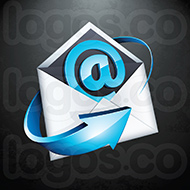
Talking at a recent networking event to a complete stranger – as you do – I was asked what kind of services I provide for my clients. Among other things, I mentioned that I sorted out people’s IT problems like their use of email. for example.
“Mmm email?”, he said, with a bit of smugness in his voice. “ That’s pretty simple stuff. We got all that sorted out years ago!”
What I should’ve said next was, “Well, that’s all very well for you, but for many very small businesses there are a large number of decisions to be made with long-term impact and it’s rarely a one-off task .” But, of course, not wishing to offend, I didn’t.
But he was wrong really, because email isn’t a simple technology (not if you want to set it up properly and get the best out of it anyway) and as your business expands, it’s something that needs more frequent revisiting. It’s true of course that email is pretty simple in concept. Everyone knows what it does and everyone manages to use it mostly without issues most days, but it’s also true that most very small businesses and individuals inherited their email setup from their broadband ISP or it was bundled in with their telephone service or their cable TV deal. Or they signed up for a free service like hotmail.com. There wasn’t a lot of thought went into it. And often, there hasn’t been much gone into it since.
So my first question is: Do you want your business to be stuck with an email address that ends in the name of someone else’s business – like hotmail.com or gmail.com or btinternet.com? Surely it would be preferable to be able to define your entire email address as something that fits your business. So get a domain name. Then we can start. You also need to decide on the type of email account – POP or IMAP or Exchange – based on how it is going to be used and the features you will need as you make more use of it.
How do you access your email account? From any web browser, anywhere you have an Internet connection? Or do you want to use email client software on your PC like Outlook which gives you much more ability to manage, arrange , backup and archive your emails? There are a multitude of client offerings. It’s not just Outlook – there’s Thunderbird, Apple Mail, Windows Mail, Windows Live Mail, SmarterMail, Incredimail and many others. There are still some people using Outlook Express.
All of the above represent just some of the decisions that need to be made with regard to one single email account. Many people – usually for historical reasons – have ended up with three, four or five email addresses or even more. So we have issues of consolidation or we may need to think of ways of managing them together, along with multiple inboxes, multiple signature blocks and other duplication.
Another important requirement that is becoming more common every day, is the need to synchronise your email accounts and calendars and task lists and lists of contacts over multiple platforms like your laptop and your work computer and your home computer, your iPad and your smart phone. This is really neat when set up well, but it can be a real source of frustration if it isn’t. Effective synchronisation should help you manage the ever-increasing volume of emails you are receiving , not just increase the amount of duplication.
The rise and rise of email marketing as an industry is one reason for the increase in the number of emails hitting your inbox. You can try to reduce this to some extent by unsubscribing from the direct marketing organisations’ lists, but it’s a continuous, on-going task. If you are interested in sending out marketing emails yourself, there is a lot of rules and regulations to understand and then work with if you want to avoid being banned, blacklisted or even accused of breaking the law and arrested.
Of course none of the regulation bothers the true SPAMers who operate out of countries with little or no anti-spamming legislation and even less interest in it. I’ve lost count of the number of times I’ve been offered Gaddafi’s millions if I’d just be so kind as to hand over my bank details so they can make a deposit. You cannot therefore use email in your business everyday without giving some serious consideration to security. Email is still one of the most common sources of viruses and other unwanted software. We’ve all heard the advice to never open dodgy-looking attachments sent to you by people you don’t know, but this is anything but simple. It isn’t just attachments, there are dangerous links within the body of many emails (sometimes in adverts inserted by third parties) and new scams will come your way regularly. You need to think about SPAM filtering and anti-virus software and safe practices. And then implement them!
The end result of all this complexity is that many small businesses don’t really have a good grip on their email setup. It tends to be more of “It’s working – for God’s sake don’t touch it!” , rather than, “Let’s see if we can make this work better and enable you to do more things much more efficiently.”
So, the next time you bump into a stranger in a networking meeting who tells you that email’s quite simple really, you can tell him you wish you were as clever as he is or that he’s talking bollocks – if you don’t mind offending people.

